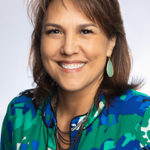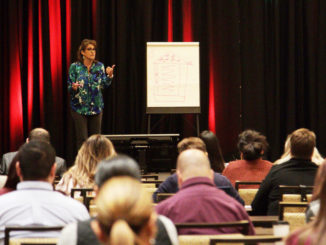Why everything starts at the “top” for a culture of incredible service
When I talk with executive leadership teams about what it is they are looking to accomplish with a guest service program, I’m usually told the same answer, “We want our frontline staff to create loyalty with our guests.” It has been my experience that this is a mindful, strategic process that takes time, dedication and hard work.
I’m in a unique position that not only have I had the experience of integrating a guest service program and leadership program into my organization, 7 Cedars Casino, but I’ve had the opportunity to work with other resorts on this process. Through mistakes at our own property, we have been able to develop a powerful leadership program that in turn has created an environment in which our team members desire to exceed guest expectations, creating loyalty.
Let me take you back to our first steps. We hired an outside organization to help us develop a branded guest service program, and I was being coached on how to be our in-house trainer. The implementation of this program seemed to go well; we were very excited to have a strategic way of training our team members for sustainability of the program.
We never anticipated the resistance we received from our frontline leaders and team members.
Our frontline leaders felt like it was one more thing on their already-full-plates, and team members felt like they could barely keep up with the mechanics of their jobs, let alone develop a relationship with our guests. One of our table game dealers said to me, “Paula, we like this program, but in all honesty, I deal cards based on who is standing behind me.”
That got me thinking: all frontline employees in all departments have “people standing behind them.” Do these supervisors and managers truly “lead” their teams? Are they coming from a “coaching” point of view? Or are they focused on the mechanics of their job? What did we do to develop them and their leadership skills in preparation of supporting our new guest service program?
It was right then that I knew we had a leadership development issue. Back to square one.
After researching the best leadership development programs, we settled on a program that not only gave the tools for frontline leaders to develop relationships with those they lead, but the program also helped develop them as leaders, placing the relationship part of their job before the mechanics of their job. The program has the “Disney philosophy”; every person in a leadership position at Disney is required to spend 70% of their time coaching and giving feedback to those they lead. Okay, 70% is a strong number, so we strive for 30%.
Following are the eight steps for creating a leadership program that I’ll be sharing with you in two articles:
Step One: Kick off the program with the “Senior Leadership Team” of the organization, the Executive Team and Directors.
We create a baseline view of the organization, establishing key metrics, taking leadership inventory, and agreeing on where the organization is at this moment and collaborating on goals for the future. During one of my consulting jobs, I had a CEO tell me that it was so helpful to have his entire team on the same page for the first time, collectively and independently. As an example, if the Senior Leadership Team (SLT) decides turnover is an issue at this time, each department will work on the issue in their respective departments. The director collaborates with the managers and supervisors, putting a plan in place to reach the goal that the SLT has put forth. We supply tools to be able to accomplish these goals, again, focusing on the relationships in the departments. If I’m a newly-hired dishwasher and my supervisor asks how training is going, is there anything else I need at the moment, and more importantly, what are my aspirations for the future, I am much more likely to stay with an organization that is investing in my future.
Step Two: Establish a vision, philosophy, and common message as it pertains to leadership.
What do we want every person in a leadership position to know and, more importantly, communicate throughout the organization? I have had team members tell me time and time again that they can ask the same question to three different supervisors and get three different answers. We strive to create consistency throughout the resort.
Step Three: Create a blueprint or game plan.
How will we implement this program throughout the resort, concentrating on systems, communication, development, accountability, and support? Every client I have worked with has said that communication is an issue organizationally, department to department, and internally. We have proven methods to help the communication issue. Development is an area that we like to focus on as well. Each team member should have a development program. Remember the dishwasher? He told his supervisors that he actually would like to become a prep cook, so let’s create a plan to get him there in the next year or so. Holding people accountable is instrumental for any organization. I had a supervisor tell me that one of their team members is always late for her shift, and I asked why she is able to get away with that. When people are not held accountable, it can lead to chaos. We also like to take a look at our support systems, paying close attention to any deficiencies in IT, Marketing, HR, etc.
Next Steps
Want more? Look for the final steps in Part II of this article; we’ll talk about the most interactive part of the program, when we create a leadership summit with the Senior Leadership Team running the show.



